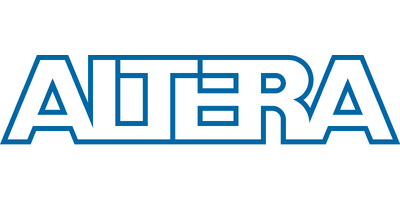1/14June 2004
VN16B
ISO HIGH SIDE SMART POWER SOLID STATE RELAY
REV. 2
Table 1. General Features
Note: 1. Nominal current according to ISO definition for high side
automotive switch. The Nominal Current is the current at
Tc = 85 °C for battery voltage of 13V which produces a
voltage drop of 0.5 V
■MAXIMUM CONTINUOUS OUTPUT
CURRENT (note 2): 20 A @ Tc= 85°C
■5V LOGIC LEVEL COMPATIBLE INPUT
■THERMAL SHUT-DOWN
■UNDER VOLTAGE PROTECTION
■OPEN DRAIN DIAGNOSTIC OUTPUT
■INDUCTIVE LOAD FAST DEMAGNETIZATION
■VERY LOW STAND-BY POWER
DISSIPATION
DESCRIPTION
The VN16B is a monolithic device made using
STMicroelectronics VIPower Technology,
intended for driving resistive or inductive loads
with one side grounded.
Built-in thermal shut-down protects the chip from
over temperature and short circuit.
The open drain diagnostic output indicates: open
load in off state and in on state, output shorted to
VCC and overtemperature. Fast demagnetization
of inductive loads is achieved by negative (-18V)
load voltage at turn-off.
Note: 2. The maximum continuous output current is the current at
Tc = 85 °C for a battery voltage of 13 V which does not
activate self protection.
Figure 1. Package
Table 2. Order Codes
Type VDSS RDS(on) In(1) VCC
VN16B 40 V 0.06 Ω5.6 A 26 V
PENTAWATT
(vertical)
PENTAWATT
(horizontal)
PENTAWATT
(in-line)
Package Tube Tape and Reel
PENTAWATT Vert. VN16B -
PENTAWATT Hor. VN16B(011Y) -
PENTAWATT In line VN16B(012Y) -
VN16B
2/14
Figure 2. Block Diagram
Table 3. Absolute Maximum Ratings
Symbol Parameter Value Unit
V(BR)DSS Drain-Source Breakdown Voltage 40 V
IOUT Output Current (cont.) at Tc = 85 °C 20 A
IOUT(RMS) RMS Output Current at Tc = 85 °C 20 A
IRReverse Output Current at Tc = 85 °C (f > 1Hz) –20 A
IIN Input Current ±10 mA
– VCC Reverse Supply Voltage –4 V
ISTAT Status Current ±10 mA
VESD Electrostatic Discharge (1.5 kΩ, 100 pF) 2000 V
Ptot Power Dissipation at Tc = 25 °C 82 W
TjJunction Operating Temperature -40 to 150 °C
Tstg Storage Temperature -55 to 150 °C
3/14
VN16B
Figure 3. Connection Diagram
Figure 4. Current and Voltage Conventions
Table 4. Thermal Data
Symbol Parameter Value Unit
Rthj-case Thermal Resistance Junction-case Max 1.5 °C/W
Rthj-amb Thermal Resistance Junction-ambient Max 60 °C/W
VN16B
4/14
ELECTRICAL CHARACTERISTICS
(8 < VCC < 16 V; -40 ≤ Tj ≤ 125 °C unless otherwise specified)
Table 5. Power
Note: 3. Nominal current according to ISO definition for high side automotive switch The Nominal Current is the current at Tc = 85 °C for
battery voltage of 13V which produces a voltage drop of 0.5 V.
Table 6. Switching
Note: 4. See Switchig Time Waveforms.
Table 7. Logic Input
Note: 5. The VIH is internally clamped at 6V about. It is possible to connect this pin to an higher voltage via an external resistor calculated
to not exceed 10 mA at the input pin.
Symbol Parameter Test Conditions Min. Typ. Max. Unit
VCC Supply Voltage 6 13 26 V
In(3) Nominal Current Tc = 85 °C VDS(on) ≤ 0.5; VCC = 13 V 5.6 8.8 A
Ron On State Resistance IOUT = In; VCC = 13 V; Tj = 25 °C 0.038 0.06 Ω
ISSupply Current Off State; VCC = 13 V; Tj ≥ 25 °C 25 50 µA
VDS(MAX) Maximum Voltage Drop IOUT = 20 A; VCC = 13 V; Tc = 85 °C 1 1.8 V
RiOutput to GND Internal
Impedance
Tj = 25 °C 5 10 20 KΩ
Symbol Parameter Test Conditions Min. Typ. Max. Unit
td(on)(4) Turn-on Delay Time Of
Output Current
Rload = 1.6 Ω 5 50 500 µs
tr(4) Rise Time Of Output
Current
Rload = 1.6 Ω 40 100 680 µs
td(off)(4) Turn-off Delay Time Of
Output Current
Rload = 1.6 Ω 10 100 500 µs
tf(4) Fall Time Of Output
Current
Rload = 1.6 Ω 40 100 680 µs
(di/dt)on Turn-on Current Slope Rload = 1.6 Ω; VCC = 13 V 0.008 0.1 A/µs
(di/dt)off Turn-off Current Slope Rload = 1.6 Ω; VCC = 13 V 0.008 0.1 A/µs
Vdemag Inductive Load Clamp
Voltage
Rload = 1.6 Ω; L = 1 mH –24 –18 –14 V
Symbol Parameter Test Conditions Min. Typ. Max. Unit
VIL Input Low Level Voltage 1.5 V
VIH Input High Level Voltage 3.5 Note 5 V
VI(hyst) Input Hysteresis Voltage 0.2 1 1.5 V
IIN Input Current VIN = 5 V; Tj = 25 °C 100 µA
VICL Input Clamp Voltage IIN = 10 mA
IIN = –10 mA
56
–0.7
7V
V
5/14
VN16B
ELECTRICAL CHARACTERISTICS (cont’d)
Table 8. Protections and Diagnostics
Note: 6. IOL(off) = (VCC -VOL)/ROL (see figure 5).
7. tpovl tpol: ISO definition (see figure 6).
Figure 5. Note 6 relevant figure Figure 6. Note 7 relevant figure
Symbol Parameter Test Conditions Min. Typ. Max. Unit
VSTAT Status Voltage Output Low ISTAT = 1.6 mA 0.4 V
VUSD Under Voltage Shut Down 3.5 5 6 V
VSCL Status Clamp Voltage ISTAT = 10 mA
ISTAT = –10 mA
56
–0.7
7V
V
TTSD Thermal Shut-down Temperature 140 160 180 °C
TSD(hyst.) Thermal Shut-down Hysteresis 15 50 °C
TRReset Temperature 125 °C
VOL(6) Open Voltage Level Off-State 2.5 3.8 5 V
IOL Open Load Current Level On-State 0.15 0.85 A
tpovl(7) Status Delay 5 10 µs
tpol(7) Status Delay 50 400 2500 µs
VN16B
6/14
Figure 7. Switching Time Waveforms
FUNCTIONAL DESCRIPTION
The device has a diagnostic output which
indicates open load in on-state, open load in off-
state, over temperature conditions and stuck-on to
VCC.
From the falling edge of the input signal, the status
output, initially low to signal a fault condition
(overtemperature or open load on-state), will go
back to a high state with a different delay in case
of overtemperature (tpovl) and in case of open load
(tpol) respectively. This feature allows to
discriminate the nature of the detected fault. To
protect the device against short circuit and over
current condition, the thermal protection turns the
integrated Power MOS off at a minimum junction
temperature of 140 °C. When this temperature
returns to 125 °C the switch is automatically turned
on again. In short circuit the protection reacts with
virtually no delay, the sensor being located inside
the Power MOS area. An internal function of the
devices ensures the fast demagnetization of
inductive loads with a typical voltage (Vdemag) of
-18V. This function allows to greatly reduces the
power dissipation according to the formula:
Pdem = 0.5 • Lload • (Iload)2 • [(VCC+Vdemag)/
Vdemag] • f
where f = switching frequency and
Vdemag = demagnetization voltage
The maximum inductance which causes the chip
temperature to reach the shut-down temperature
in a specified thermal environment is a function of
the load current for a fixed VCC, Vdemag and f
according to the above formula. In this device if the
GND pin is disconnected, with VCC not exceeding
16V, it will switch off.
PROTECTING THE DEVICE AGAINST
REVERSE BATTERY
The simplest way to protect the device against a
continuous reverse battery voltage (-26V) is to
insert a Schottky diode between pin 1(GND) and
ground, as shown in the typical application circuit
(Figure 10).
The consequences of the voltage drop across this
diode are as follows:
– If the input is pulled to power GND, a negative
voltage of -Vf is seen by the device. (VIL, VIH
thresholds and VSTAT are increased by Vf with
respect to power GND).
– The undervoltage shutdown level is increased
by Vf.
If there is no need for the control unit to handle
external analog signals referred to the power
GND, the best approach is to connect the
reference potential of the control unit to node [1]
(see application circuit in Figure 10), which
becomes the common signal GND for the whole
control board avoiding shift of VIH, VIL and VSTAT.
This solution allows the use of a standard diode.
7/14
VN16B
Table 9. Truth Table
Note: 8. With an additional external resistor.
Figure 8. Waveforms
Input Output Diagnostic
Normal Operation L
H
L
H
H
H
Over-temperature X L L
Under-voltage X L H
Short load to VCC H
L
H
H
L
L
Open Load H
L
H
L
L
L(8)
VN16B
8/14
Figure 9. Over Current Test Circuit
Figure 10. Typical Application Circuit With A Schottky Diode For Reverse Supply Protection
9/14
VN16B
Figure 11. Typical Application Circuit With Separate Signal Ground
VN16B
10/14
PACKAGE MECHANICAL
Table 10. PENTAWATT (vertical) Mechanical Data
Figure 12. PENTAWATT (vertical) Package Dimensions
Note: Drawing is not to scale.
Symbol millimeters
Min Typ Max
A4.8
C1.37
D2.4 2.8
D1 1.2 1.35
E0.35 0.55
F 0.8 1.05
F1 1 1.4
G3.23.43.6
G1 6.6 6.8 7
H2 10.4
H3 10.05 10.4
L2 23.05 23.4 23.8
L3 25.3 25.65 26.1
L5 2.6 3
L6 15.1 15.8
L7 6 6.6
Dia. 3.65 3.85
11/14
VN16B
Table 11. PENTAWATT (horizontal) Mechanical Data
Figure 13. PENTAWATT (horizontal) Package Dimensions
Note: Drawing is not to scale.
Symbol millimeters
Min Typ Max
A4.8
C1.37
D2.4 2.8
D1 1.2 1.35
E0.35 0.55
F 0.8 1.05
F1 1 1.4
G3.23.43.6
G1 6.6 6.8 7
H2 10.4
H3 10.05 10.4
L 14.2 15
L1 5.7 6.2
L2 14.6 15.2
L3 3.5 4.1
L5 2.6 3
L6 15.1 15.8
L7 6 6.6
Dia. 3.65 3.85
VN16B
12/14
Table 12. PENTAWATT (in-line) Mechanical Data
Figure 14. PENTAWATT (in-line) Package Dimensions
Note: Drawing is not to scale.
Symbol millimeters
Min Typ Max
A4.8
C1.37
D2.4 2.8
D1 1.2 1.35
E0.35 0.55
F 0.8 1.05
F1 1 1.4
G3.23.43.6
G1 6.6 6.8 7
H2 10.4
H3 10.05 10.4
L2 23.05 23.4 23.8
L3 25.3 25.65 26.1
L5 2.6 3
L6 15.1 15.8
L7 6 6.6
Dia. 3.65 3.85
13/14
VN16B
REVISION HISTORY
Table 13. Revision History
Date Revision Description of Changes
September-1994 1 First Issue
18-June-2004 2 Stylesheet update. No content change.
VN16B
14/14
Information furnished is believed to be accurate and reliable. However, STMicroelectronics assumes no responsibility for the consequences
of use of such information nor for any infringement of patents or other rights of third parties which may result from its use. No license is granted
by implication or otherwise under any patent or patent rights of STMicroelectronics. Specifications mentioned in this publication are subject
to change without notice. This publication supersedes and replaces all information previously supplied. STMicroelectronics products are not
authorized for use as critical components in life support devices or systems without express written approval of STMicroelectronics.
The ST logo is a registered trademark of STMicroelectronics.
All other names are the property of their respective owners
© 2004 STMicroelectronics - All rights reserved
STMicroelectronics GROUP OF COMPANIES
Australia - Belgium - Brazil - Canada - China - Czech Republic - Finland - France - Germany - Hong Kong - India - Israel - Italy - Japan -
Malaysia - Malta - Morocco - Singapore - Spain - Sweden - Switzerland - United Kingdom - United States
www.st.com



